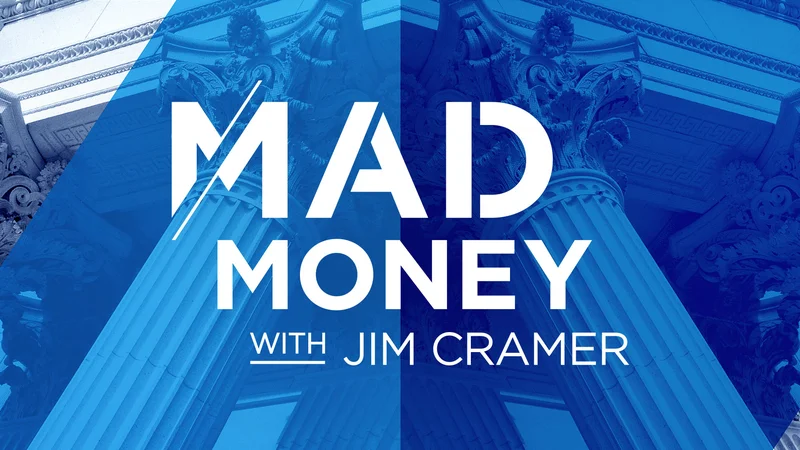Decoding the Chaos: The Enduring, Baffling Genius of Jim Cramer's Mad Money
There’s a specific kind of chaos that defines the Mad Money show, isn’t there? It’s a whirlwind of cowbell sound effects, frantic button-mashing, and a man in rolled-up shirtsleeves yelling directly into the camera with an almost evangelical fervor. One night he’s telling you Affirm is a buy, the next he’s warning that a company like UiPath is untouchable. It’s loud, it’s abrasive, and to the uninitiated, it looks completely unhinged. And yet, decades after it first aired, the show and its host, Jim Cramer, remain a fixture in the American financial landscape.
In an era of sleek robo-advisors, passive index funds, and algorithmic trading, this human lightning rod seems like an anachronism. Critics, most famously Jon Stewart, have taken him to task for failing to predict downturns and for the sheer spectacle of it all. So, the question I keep coming back to is a simple one: Why does Jim Cramer still matter? What is the fundamental value proposition of Mad Money in 2025? I think the answer has almost nothing to do with stock picks and everything to do with translating the cold, intimidating language of Wall Street into pure, unadulterated human emotion.
The Performance is the Product
Let’s be brutally honest. Watching Mad Money with Jim Cramer isn’t like watching other financial news. It’s not a lecture; it’s a rock concert. I have to admit, when I first watched the show years ago, I was taken aback by the sheer sensory overload—it felt less like financial analysis and more like a high-stakes game show where the prize was your retirement fund. But after watching for a while, I realized something profound. The chaos isn't a bug; it's the entire point.
Cramer is the ultimate frontman for finance. He’s the Mick Jagger of the S&P 500. He takes the dry, terrifying world of balance sheets, P/E ratios, and market caps and turns it into a spectacle you can’t look away from. He’s not just reporting on the market; he’s performing it. This is a man with a Harvard law degree who cut his teeth at Goldman Sachs and ran a massively successful hedge fund. He knows the intricacies of the market inside and out. But he chooses to communicate not in the sterile language of an analyst report, but through shouts, props, and primal sound effects. Why? Because emotion is a universal language. Fear and greed are far more relatable than discounted cash flow analysis.

This performance serves as a bridge. It’s a way of taking an exclusive, members-only club—Wall Street—and throwing the doors wide open. He’s not just giving you a stock tip; he’s giving you a ticket to the game. Does this theatricality sometimes overshadow the substance? Of course. But what if the primary goal isn't just to be right about a stock, but to get millions of people to simply care about their financial future in the first place?
From Gatekeeper to Gamemaster
For most of history, investing was something done to you, not by you. It was a world of gatekeepers in expensive suits who used impenetrable jargon to manage your money for a hefty fee. What Cramer did, perhaps more effectively than anyone before him, was to change the entire paradigm. He’s a popularizer, a translator. He’s democratizing financial literacy—or, to put it more simply, he’s teaching people the language of Wall Street so they don't feel like outsiders anymore. He’s telling you that you don’t need a fancy degree or a seat on the exchange to have an opinion and to act on it.
This is the kind of breakthrough that reminds me why I got into this field in the first place—it’s about empowering people with information. The sheer velocity of information and the sense of agency he provides is staggering—it means the gap between the average person and the market is closing faster than we could have ever imagined just a generation ago, and that changes everything. Think of him as the Gutenberg of financial television. Before the printing press, knowledge was held by a select few. Afterward, it was available to the masses, for better or worse. Cramer took the "sacred texts" of finance and started printing them live on air, every single night.
When a CEO like Joe Hinrichs of CSX comes on the Mad Money show, he isn’t there to debate the finer points of railroad logistics with institutional investors. He’s there to talk to Cramer’s audience: the individual, the retail investor, the person trying to build long-term wealth. Cramer has created a unique platform that connects the C-suite directly to Main Street, bypassing the traditional gatekeepers. This, of course, comes with an immense ethical weight. The power to move markets with a single "Booyah!" is a heavy burden, and it raises a critical question: In this new, democratized financial world, who is ultimately responsible for protecting the individual investor from their own enthusiasm? Is it the host, or is it the viewer?
The Real Bull Market is in Belief
Ultimately, judging Jim Cramer on the accuracy of his stock picks is like judging a master chef on the nutritional value of a single grain of salt. You’re missing the entire meal. His true product isn't alpha or market-beating returns. It’s empowerment. It’s engagement. He took investing—a passive, intimidating, and often boring activity—and turned it into an active, emotional, and participatory sport. He’s selling the belief that you belong in the conversation, that your money matters, and that you have the power to take control of your own financial destiny. In a world that often feels rigged against the little guy, that’s one of the most valuable commodities on the market.
